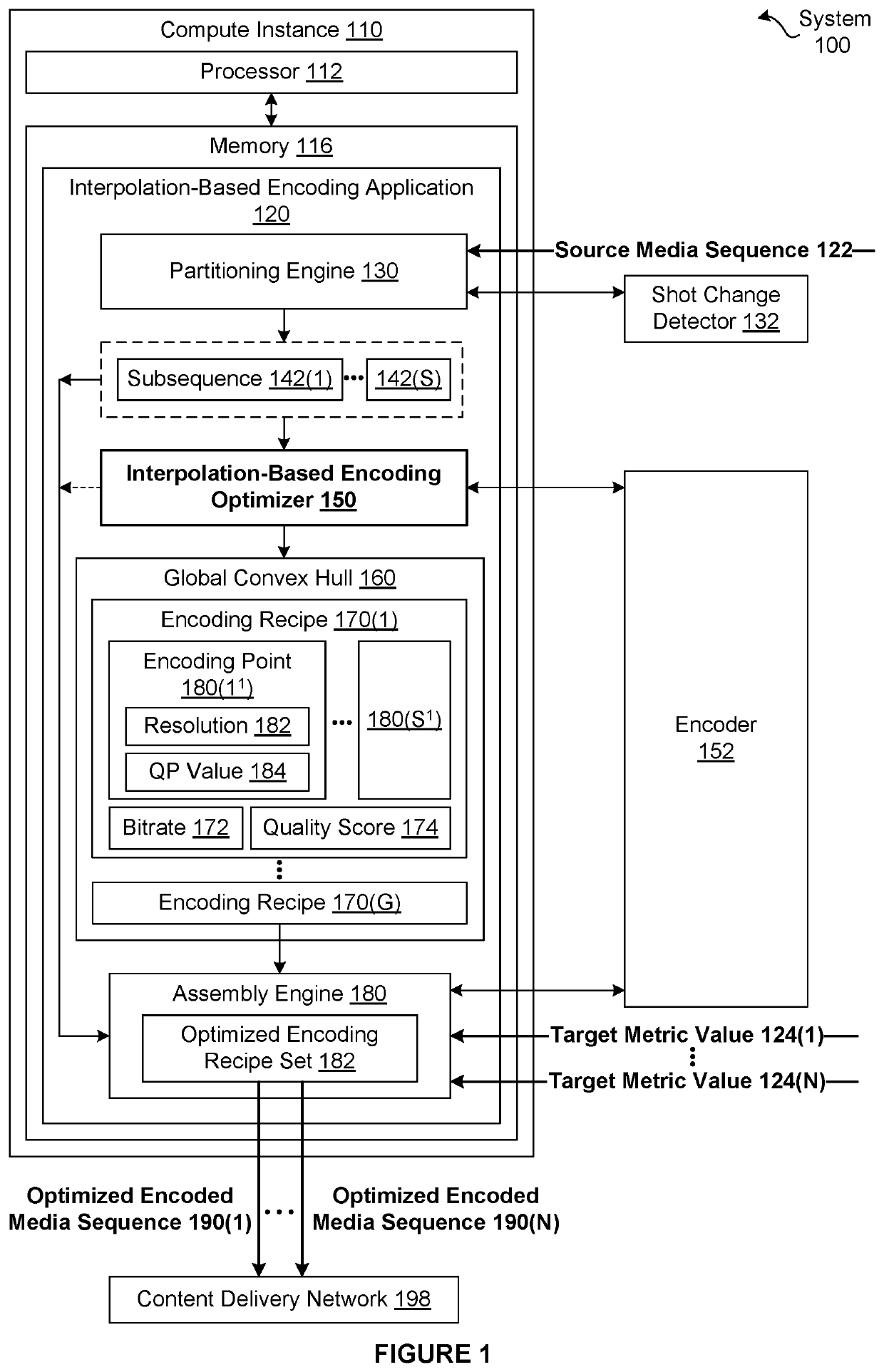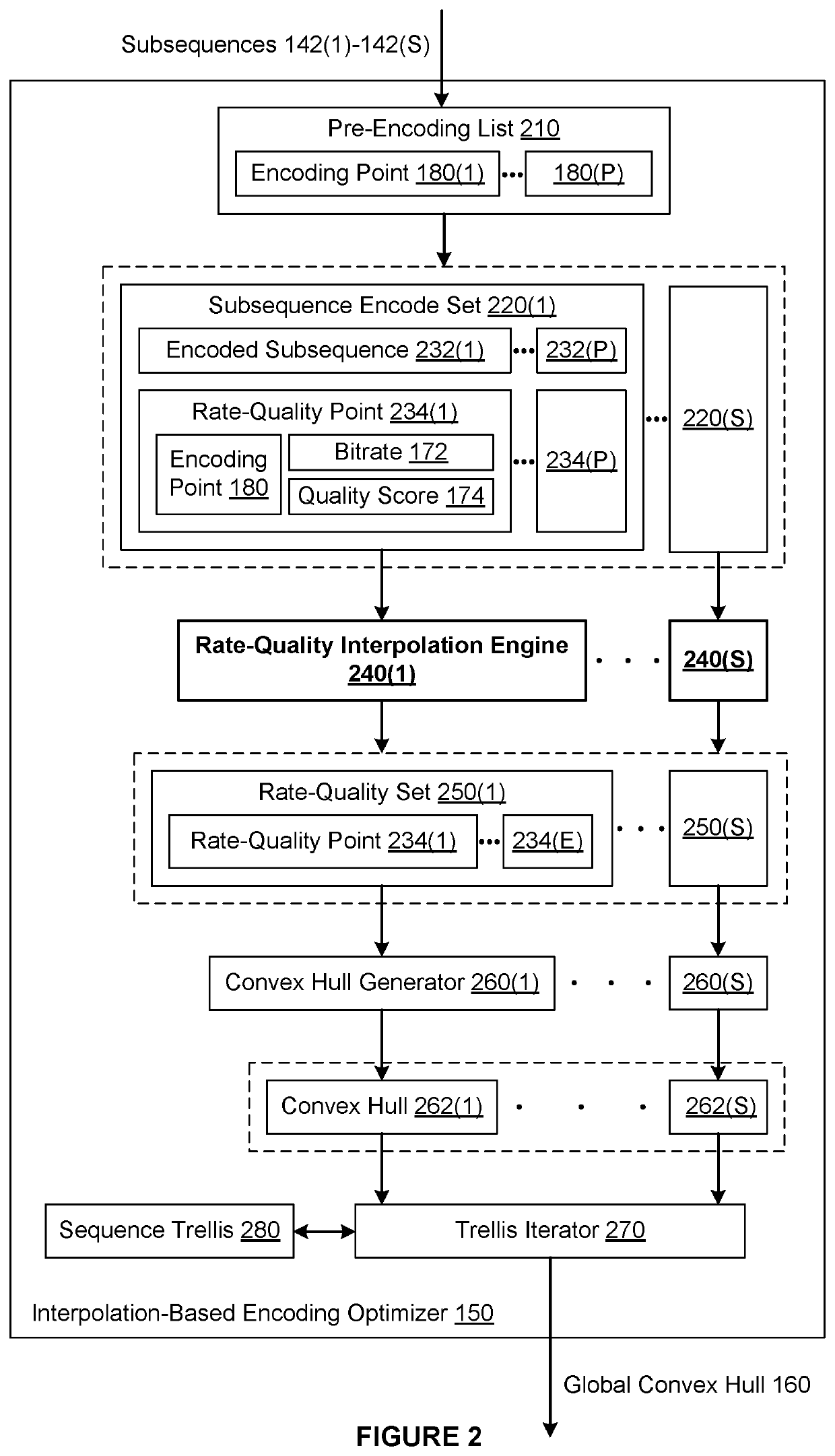Techniques for efficiently performing subsequence-based encoding for a media title
- Summary
- Abstract
- Description
- Claims
- Application Information
AI Technical Summary
Benefits of technology
Problems solved by technology
Method used
Image
Examples
Embodiment Construction
[0002]The various embodiments relate generally to computer science and media processing and, more specifically, to techniques for efficiently performing subsequence-based encoding for a media title.
Description of the Related Art
[0003]A typical media streaming service provides access to a library of media titles that can be viewed on a range of different endpoint devices. Each endpoint device may connect to the media streaming service under different connection conditions that affect bandwidth and latency. In many implementations, an endpoint device that connects to a media streaming service executes an endpoint application that determines, for a given media title, an appropriate encoded version of the media title to stream to the endpoint device based on the connection conditions and the properties of the endpoint device. More specifically, the endpoint application attempts to select a particular encoded version of the media title that provides the best possible visual quality durin...
PUM
 Login to View More
Login to View More Abstract
Description
Claims
Application Information
 Login to View More
Login to View More - R&D
- Intellectual Property
- Life Sciences
- Materials
- Tech Scout
- Unparalleled Data Quality
- Higher Quality Content
- 60% Fewer Hallucinations
Browse by: Latest US Patents, China's latest patents, Technical Efficacy Thesaurus, Application Domain, Technology Topic, Popular Technical Reports.
© 2025 PatSnap. All rights reserved.Legal|Privacy policy|Modern Slavery Act Transparency Statement|Sitemap|About US| Contact US: help@patsnap.com



